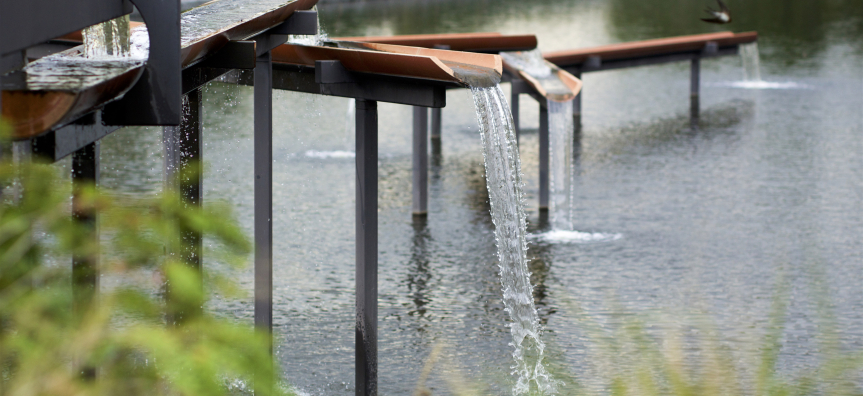Interested in how creative and scientific communities are collaborating to safeguard the living world? Join three of Australia’s leading environmental practitioners for a discussion and Q&A, moderated by Angus Dalton, science reporter for The Sydney Morning Herald.
Over the past two years, MAG&M’s CEAD (Collective for Environmental Art & Design) initiative has explored creative responses to climate change, collective action, and sustainability in the art and design sectors. In 2025, we turn our focus to the third tenet of the CEAD Framework: Biodiversity.
The speakers will reflect on how creative and scientific communities are collaborating to safeguard the living world. Framed by CEAD’s principles - Act, Connect, Learn - the event will explore cross-disciplinary approaches to ecological sustainability and offer fresh perspectives on the role of creativity in sustaining biodiversity.
The event aims to foster a dynamic and productive conversation, sparking tangible ideas for environmental stewardship and broadening our understanding of the intersections between art, design, science, and biodiversity. This event is also part of the 2025 Environmental Art & Design Prize.
About the speakers:
Angus Dalton (Facilitator) is a science reporter for The Sydney Morning Herald, known for his vivid storytelling on biodiversity, climate change, and urban ecology. As co-founder of Sweaty City, a magazine dedicated to urban environmental issues, Dalton has long explored the intersections of science, design, and the natural world. His reporting often highlights the adaptive behaviours of wildlife in urban settings, such as Sydney’s cockatoos learning to operate bubblers, underscoring the complex entanglements between humans and other species. Dalton has also chaired public conversations at Bundanon, facilitating dialogues between artists and scientists on topics like fungi, evolution, and environmental futures. His work has been featured in Australian Geographic, Overland, and multiple editions of The Best Australian Science Writing. In 2025, he was Highly Commended in the inaugural Best Science Journalist award, recognized for his compelling narratives that bridge science and society.
Caroline Pidcock is an architect and advocate for regenerative design, renowned for her commitment to integrating biodiversity into the built environment. As Director of PIDCOCK, she has led innovative projects that prioritize ecological restoration and biophilic design. A spokesperson for Architects Declare Australia, Pidcock emphasizes the urgency of addressing climate change and biodiversity loss through sustainable architecture. Her leadership roles include Chair of 1 Million Women and involvement with various design review panels, reflecting her dedication to community and environmental advocacy. Recognized as a Life Fellow of the Australian Institute of Architects, Pidcock's work exemplifies how thoughtful design can foster a harmonious relationship between urban development and the natural world.
Dr Zoë Sadokierski is a book designer, author, and associate professor in Visual Communication at UTS, where she co-directs the UTS Visualisation Institute. Her practice-based research explores how visual storytelling—through collage, data visualisation, illustrated nonfiction, and experimental typography—can communicate complex ecological issues. With a PhD focused on the narrative role of graphic devices in fiction, Zoë now applies her design expertise to environmental communication. She collaborates with major Australian museums to create immersive, multimedia experiences that foster public engagement with biodiversity loss and ecological change. Projects like Survival Stories, Precarious Birds, and The Urban Field Naturalist Project blend science, storytelling, and design to combat ecological amnesia and cultivate urban ecological awareness. Her 2024 book, Father, Son and Other Animals, uses creative nonfiction to explore extinction and parenting in the age of climate crisis. Sadokierski’s work sits at the intersection of art, design, and environmental advocacy, crafting futures through visual narrative.
Jennifer Turpin is an environmental artist whose collaborative public artworks integrate art, science, and ecological systems. Her work explores the intersection of urban design and environmental restoration, creating poetic, kinetic installations that respond to natural forces. As part of Water Falls at Sydney Park, Turpin contributed to a landmark stormwater harvesting and habitat regeneration project. The artwork operates within the water treatment train, oxygenating and cleansing stormwater while simultaneously providing bathing and drinking sites for native birdlife. Turpin’s practice exemplifies how art and design can support biodiversity in urban environments, using aesthetic experiences to deepen public understanding of ecological processes. Her work demonstrates the vital role artists play in imagining and shaping sustainable, interconnected futures for humans and non-human species alike.
Pricing
Free

